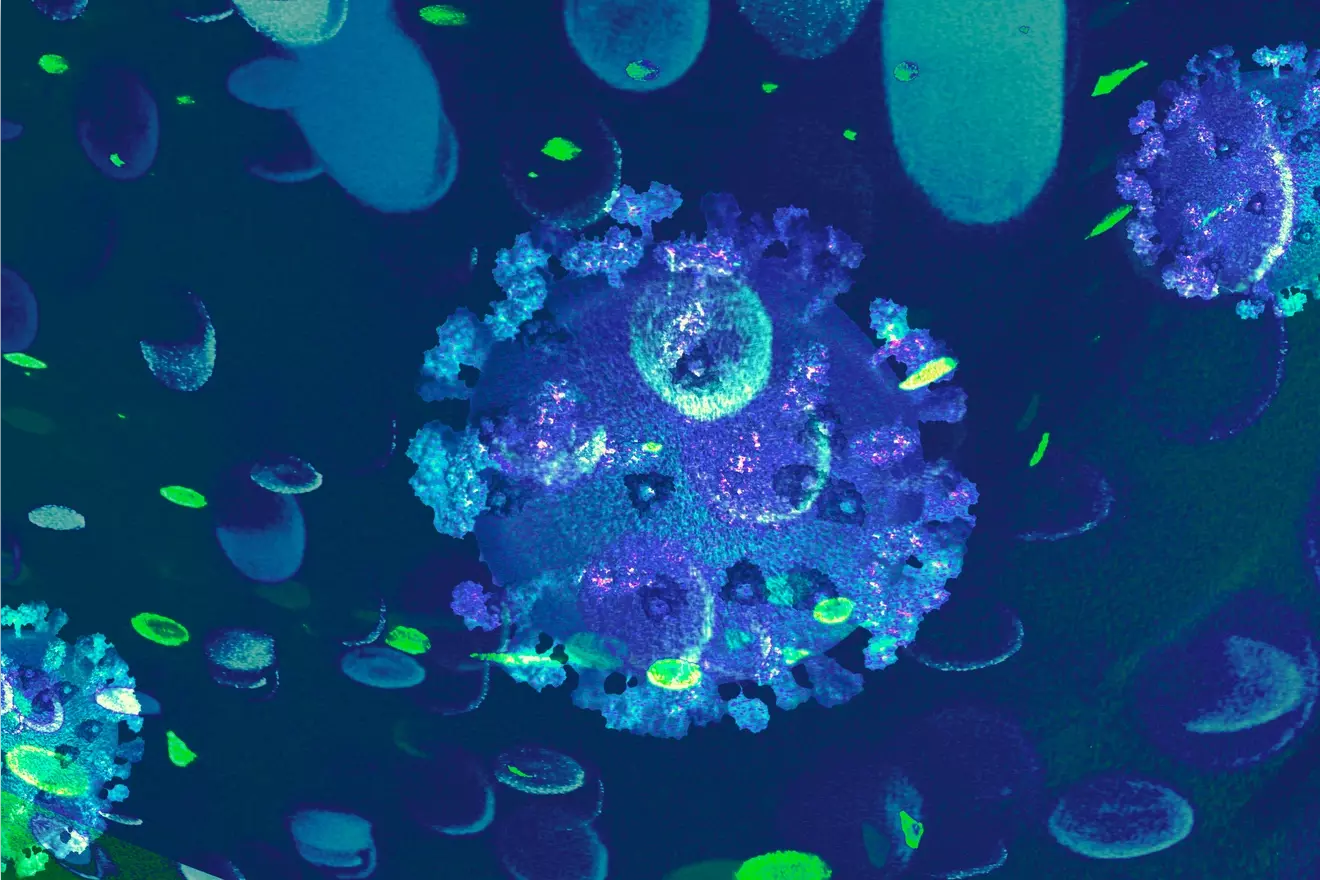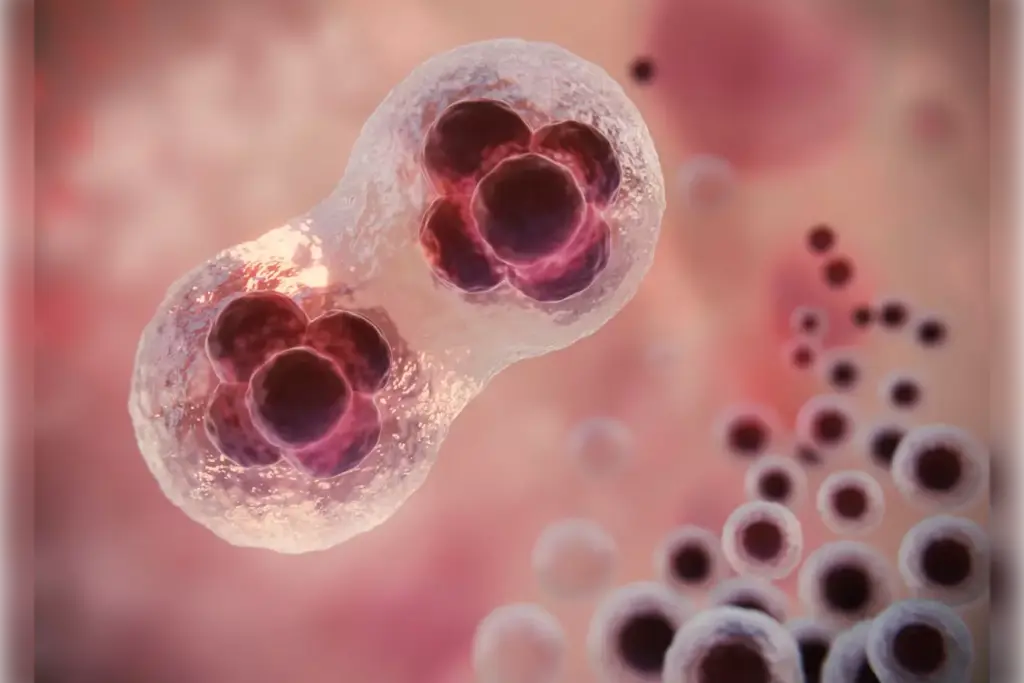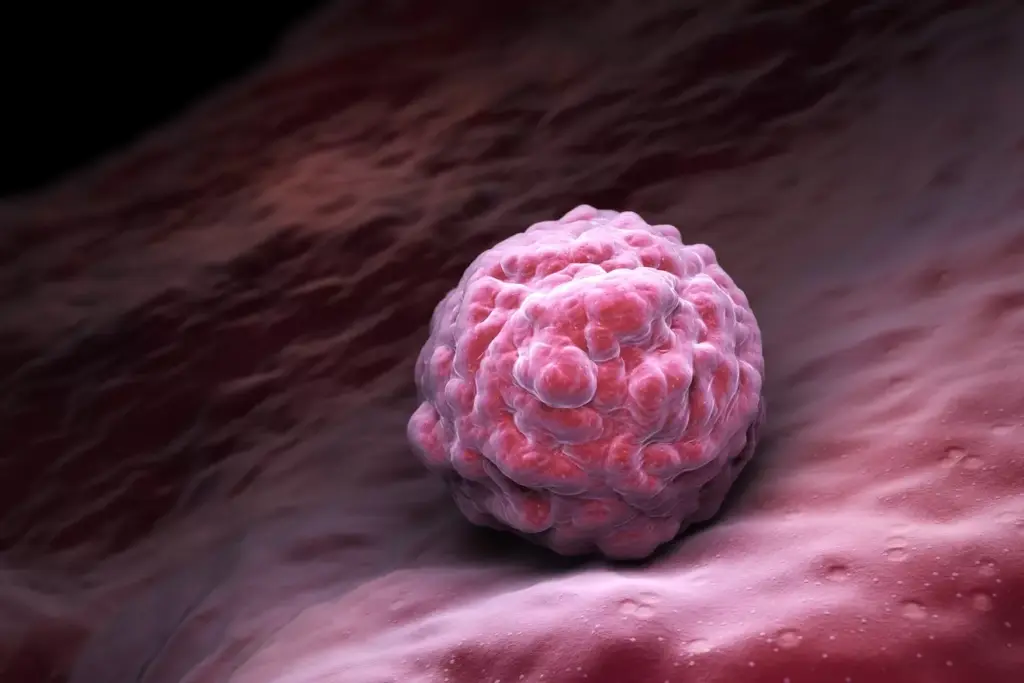Last Updated on November 26, 2025 by Bilal Hasdemir

At Liv Hospital, we understand the human immune system’s complexity. T lymphocytes, or T cells, are key in fighting infections and diseases.
T cells are at the heart of the adaptive immune system. They help our body fight specific threats. Their special design lets them tell the difference between good and bad, starting an immune response when needed.
Knowing about T lymphocytes helps us grasp the immune system’s complexity. We’ll look at seven key facts about T cells. These facts highlight their functions and importance in keeping us healthy.
Key Takeaways
- T lymphocytes are a vital part of the adaptive immune system.
- T cells recognize and respond to specific antigens.
- Their unique structure and development enable them to distinguish between friend and foe.
- T lymphocytes play a vital role in cell-mediated immunity.
- Dysfunction of T cells can lead to various immune-related disorders.
The Fundamental Role of T Lymphocytes in Immune Defense
T cells are vital to our immune system. They help fight infections and diseases through cell-mediated immunity. As part of the adaptive immune system, T lymphocytes are key in recognizing and attacking foreign invaders.
Defining T Cells in the Adaptive Immune System
T cells, or T lymphocytes, are a type of white blood cell. They mature in the thymus. They are essential for the adaptive immune response, helping to tell self from non-self cells and leading the fight against pathogens.
The adaptive immune system remembers past infections. This allows for a quicker and stronger response when we face infections again. T cells play a big role in this, with different types doing different jobs.
Historical Discovery and Significance
The discovery of T cells happened in the mid-20th century. Immunologists were able to tell apart different lymphocytes. The name “T cell” comes from the thymus, where these cells grow up.
The finding of T cells was a big step in immunology. It helped us understand cell-mediated immunity. This knowledge has been key in creating treatments for immune disorders and shaping modern immunotherapy.
Learning about T cells and their role in protecting us helps us understand how our immune system works. It also guides the development of treatments for immune-related diseases.
T Lymphocytes Function: Cell-Mediated Immunity Explained
T lymphocytes, or T cells, are key to our immune system’s response to invaders. They are a type of white blood cell important for cell-mediated immunity.
Recognition and Response to Foreign Antigens
T cells spot antigens with their T cell receptor (TCR). This is key for starting an immune response. The TCR is very specific, helping T cells find and attack specific antigens. When a T cell finds an antigen that fits its TCR, it gets ready to act.
“The T cell receptor’s specificity lets T cells target infected cells or foreign stuff without harming our own cells,” research in immunology says.
Distinguishing Between Self and Non-Self
T lymphocytes can tell self from non-self. This happens during T cell development in the thymus. Positive selection makes sure T cells can recognize self-MHC molecules. Negative selection removes T cells that react against self-antigens.
- T cells that make it through this process can recognize and fight foreign antigens.
- They are vital in keeping our body safe from infections and diseases.
Coordination of Targeted Immune Attacks
T lymphocytes lead the charge in immune attacks. They activate other immune cells and kill infected cells or send signals to start the immune response. CD4+ helper T cells help by activating B cells and other T cells. CD8+ cytotoxic T cells kill infected cells directly.
So, T lymphocytes are key to cell-mediated immunity. They give our body a strong defense against harmful pathogens.
The Origin Story: Where Do T Cells Develop?
T cells are key to our immune system. They start in the bone marrow. Knowing where T cells come from helps us understand how they fight off infections and diseases.
Hematopoietic Stem Cell Origins in Bone Marrow
T cells come from hematopoietic stem cells in the bone marrow. These stem cells are the first step to all blood cells, including immune cells.
First, these stem cells turn into lymphoid progenitor cells. Then, they move to the thymus to become T cells.
As an immunologist, notes, “The bone marrow is where T cells start. Their journey continues in the thymus.”
What Does the “T” in T Cell Stand For?
The “T” in T cell means thymus. T cells start in the bone marrow and then go to the thymus. There, they grow and learn to fight off invaders.
This growth is key. It helps T cells know what’s their own and what’s not. This prevents them from attacking our own body.
As
“The thymus plays a vital role in T cell development. It’s where they learn to fight off invaders.”
In summary, T cells start in the bone marrow and finish in the thymus. This two-step process is vital for their role in our immune system.
The Journey Through the Thymus: T Cell Maturation Process
T cells mature in the thymus, a key step in immune system development. The thymus is a special organ that helps T cells grow and mature.
Stages of T Cell Development
T cell development in the thymus has different stages. First, immature T cells grow and change a lot. They start as double-negative thymocytes and become double-positive thymocytes with CD4 and CD8 markers.
- First, cells from the bone marrow move to the thymus.
- Then, they go through stages like the double-negative stage.
- Later, they become double-positive thymocytes with CD4 and CD8 markers.
Positive and Negative Selection
Two important processes shape T cells in the thymus: positive selection and negative selection. Positive selection makes sure T cells can recognize self-MHC molecules. Negative selection removes T cells that react too much to self-antigens, preventing autoimmunity.
- Positive selection happens when double-positive thymocytes meet thymic epithelial cells.
- Negative selection deletes T cells that bind too strongly to self-antigens on thymic dendritic cells.
Development of T Cell Receptor Diversity
T cell receptor (TCR) diversity is key in T cell maturation. This diversity comes from V(D)J recombination, which mixes variable, diversity, and joining gene segments. This makes TCRs able to recognize many different antigens.
The complex process of T cell maturation in the thymus is vital for a working immune system. It prepares the immune system to fight off pathogens without causing autoimmunity.
T Cell Structure: Anatomy of an Immune Defender
Understanding T cells is key to knowing how they protect us. T cells, or T lymphocytes, are a type of white blood cell. They play a big role in cell-mediated immunity.
We will look at the details of T cell anatomy. This includes their cellular parts, the T cell receptor complex, and surface markers that identify them.
Cellular Components and Organelles
T cells have a complex structure like other eukaryotic cells. They have various organelles that are essential for their function. The large nucleus holds most of the cell’s genetic material. It directs the cell’s activities, including making proteins for immune responses.
The cytoplasm of T cells has mitochondria for energy and endoplasmic reticulum for protein synthesis. The golgi apparatus modifies, sorts, and packages proteins for secretion or use within the cell.
The T Cell Receptor Complex
The T cell receptor (TCR) complex is vital for T cell structure. It recognizes antigens presented by major histocompatibility complex (MHC) molecules on antigen-presenting cells (APCs). The TCR is made of several chains, usually an alpha and a beta chain, forming the antigen-binding site.
The TCR complex also includes CD3 molecules. These are key for signal transduction when antigens are recognized. This setup lets T cells recognize and respond to specific antigens.
Surface Markers and Identification Methods
T cells have specific surface markers for identification. CD4 and CD8 are two important markers. They distinguish helper T cells (CD4+) from cytotoxic T cells (CD8+).
| Surface Marker | Function/Association |
|---|---|
| CD3 | Part of the TCR complex, involved in signal transduction |
| CD4 | Helper T cells, assists in activation of other immune cells |
| CD8 | Cytotoxic T cells, directly kills infected cells or produces chemical signals |
| CD28 | Co-stimulatory molecule, enhances T cell activation |
These surface markers are vital for T cell function. They also help in treating immune-related disorders.
Major T Cell Subtypes and Their Specialized Roles
T cells are key players in our immune system. They help fight off different kinds of threats. Each type of T cell has its own job, making our immune system strong and diverse.
We’ll look at CD4+ helper T cells, CD8+ cytotoxic T cells, and regulatory T cells. Each one has a special role in how our immune system works.
CD4+ Helper T Cells: The Immune Coordinators
CD4+ helper T cells start and guide the immune response. They find and bind to antigens on other cells. This helps activate B cells and cytotoxic T cells.
These cells also make cytokines. These molecules help other immune cells do their jobs. Helper T cells are vital for fighting off infections.
CD8+ Cytotoxic T Cells: The Targeted Destroyers
CD8+ cytotoxic T cells kill infected or cancerous cells. They find these cells by recognizing specific antigens. This is done through MHC class I molecules.
When they find a target, they release substances that kill the cell. This stops the infection or cancer from spreading.
Regulatory T Cells: Maintaining Immune Balance
Regulatory T cells (Tregs) keep our immune system in check. They stop our immune system from attacking our own cells. This prevents autoimmune diseases.
Tregs help our body accept foreign substances without attacking them. They are key to keeping our immune system healthy and balanced.
| T Cell Subtype | Function | Key Characteristics |
|---|---|---|
| CD4+ Helper T Cells | Coordinate immune response | Recognize antigens, produce cytokines |
| CD8+ Cytotoxic T Cells | Kill infected or tumor cells | Recognize MHC class I molecules, release cytotoxins |
| Regulatory T Cells | Maintain immune balance | Suppress excessive immune responses, promote tolerance |
T Cell Activation: From Recognition to Response
T cell activation is a key moment in the immune response. It’s when T cells recognize and react to antigens. This process is vital for the body to fight off different pathogens.
The Two-Signal Activation Model
T cell activation isn’t just a simple yes or no. It’s a complex two-signal model. The first signal comes from T cells recognizing antigens on antigen-presenting cells (APCs). The second signal, or co-stimulatory signal, is needed for full activation.
Without both signals, T cells may become anergic or undergo apoptosis. This prevents them from causing harm or autoimmune responses. It shows how the immune system balances being ready to act and staying safe.
Antigen Presentation by APCs
Antigen presentation is key for T cell activation. APCs like dendritic cells and macrophages take in pathogens. They then break down the antigens and show them to T cells on their surface.
The context of antigen presentation greatly affects T cell activation. The right co-stimulatory signals and cytokines help guide the T cell response. They help T cells grow, differentiate, and become effective cells.
Cytokine Production and Signaling Cascades
Activated T cells make cytokines that help lead the immune response. Different T cells make different cytokines, shaping the immune response. For example, helper T cells (Th1, Th2, Th17) help fight infections in various ways.
The signals from T cell activation start a chain of events. This complex process is key for a strong and coordinated immune response.
T Cell Distribution: Where T Lymphocytes Reside and Patrol
T cells move around the body to fight off infections. They live in different parts of the immune system. This helps them keep an eye out for threats.
Circulation Patterns in Blood and Lymphatic System
T cells travel through blood and lymph, a network that reaches all parts of the body. This lets them find and fight off invaders in different places. The lymph system, with its nodes, spleen, and tissues, helps T cells move and meet antigens.
By moving between blood and lymph, T cells meet with cells that show them what to fight. This is key for starting an immune response. It makes sure T cells can tackle threats where they first appear.
Tissue-Resident T Cells and Their Importance
There are also T cells that stay in certain areas, like the skin and gut. These cells watch over these places closely. They can quickly attack invaders that try to get in.
These local T cells help keep infections away and keep the immune system balanced. But, if they get too active, they can cause problems. Scientists are studying them to find new ways to help the immune system.
Lymphoid Organs as T Cell Hubs
Lymphoid organs like lymph nodes and the spleen are key for T cell work. They help T cells meet with cells that show them what to fight. This is how the immune system starts to work.
The spleen filters blood and helps T cells fight off blood-borne threats. Lymph nodes deal with invaders that come in through the body’s openings. These organs are vital for a healthy immune system. Without them, the body can’t fight off infections well.
T Cell Memory: How Immune Protection Persists
T cell memory is key to our immune system. It keeps us safe from pathogens we’ve seen before. This helps our body fight off infections faster and more effectively.
Formation of Memory T Cell Populations
When an infection goes away, some T cells turn into memory T cells. These cells live a long time and can spot specific pathogens again. The process of making memory T cells involves many steps and interactions.
Many things affect how memory T cells form. Things like how strong the antigen is, the presence of certain signals, and the environment around the cells. Knowing these details helps us make better vaccines and treatments.
Central and Effector Memory T Cells
Memory T cells fall into two groups: central memory T cells (Tcm) and effector memory T cells (Tem). Tcm cells stay in lymphoid organs and grow when they see the antigen again. Tem cells are ready to act fast and are found in other parts of the body.
Key characteristics of central and effector memory T cells:
| Characteristics | Central Memory T Cells (Tcm) | Effector Memory T Cells (Tem) |
|---|---|---|
| Primary Location | Lymphoid Organs | Peripheral Tissues |
| Proliferative Capacity | High | Moderate |
| Effector Function | Delayed | Immediate |
Long-Term Immunity and Faster Secondary Responses
Memory T cells are essential for long-term protection. When we see an antigen again, memory T cells quickly grow and become effector T cells. This leads to a faster and stronger immune response than the first time.
Memory T cells are why vaccines work so well. They help our body remember how to fight off infections. This makes vaccines very effective in keeping us safe from diseases.
T Lymphocytes in Disease: When Function Goes Awry
Dysfunctional T lymphocytes can cause many immune-related disorders. These include autoimmune diseases and immunodeficiency conditions. T cells are key to our immune system, and problems with them can be serious.
Autoimmune Disorders and T Cell Dysregulation
Autoimmune disorders happen when the immune system attacks the body’s own cells. T cell problems are a big part of many autoimmune diseases. This includes rheumatoid arthritis, multiple sclerosis, and type 1 diabetes. In these cases, T cells can’t tell the difference between self and non-self, leading to an attack on the body’s own cells.
Mechanisms of Autoimmune T Cell Dysregulation
- Failure of negative selection in the thymus
- Activation of autoreactive T cells
- Imbalance in regulatory T cell function
Immunodeficiency Conditions Affecting T Cells
T cell immunodeficiencies can come from genetic defects, infections like HIV, or other factors. These issues can make it hard for T cells to work right. This makes people more likely to get infections and certain cancers.
| Condition | Description | Impact on T Cells |
|---|---|---|
| SCID (Severe Combined Immunodeficiency) | A genetic disorder affecting both T and B cells | Severe reduction or absence of T cells |
| HIV/AIDS | A viral infection targeting CD4+ T cells | Progressive depletion of CD4+ T cells |
T Cells in Cancer Immunotherapy
Cancer immunotherapy is a new way to fight cancer. T cells are at the heart of this, with CAR-T cell therapy showing great promise. This therapy changes a patient’s T cells to better fight cancer cells.
Advances in Cancer Immunotherapy
- CAR-T cell therapy for hematological malignancies
- Checkpoint inhibitors to enhance T cell activity against tumors
- T cell-based vaccines to stimulate anti-tumor responses
In conclusion, T lymphocytes are vital for our immune system. Problems with them can lead to many diseases. Understanding T cells’ role in autoimmune diseases, immunodeficiency, and cancer therapy is key to better treatments and outcomes.
Conclusion: The Remarkable Significance of T Lymphocytes
T lymphocytes are key to our immune system, forming the backbone of adaptive immunity. We’ve looked into how T cells work, from their start to their role in fighting off infections and diseases.
T cells are special because they can spot and attack specific invaders. This makes them vital for our body’s defense. If T cells don’t work right, we might get autoimmune diseases or have weak immune systems.
Learning about T lymphocytes helps us understand immunology better. It also leads to new treatments, like cancer therapies. The study of T cells is essential for finding new ways to fight diseases.
As we learn more about the immune system, T lymphocytes’ importance becomes even clearer. They are essential for keeping our immune system in balance and protecting us from illness.
What is the role of T lymphocytes in the immune system?
T lymphocytes, or T cells, are key in cell-mediated immunity. They recognize and attack foreign substances. They also coordinate the immune response.
Where do T cells develop?
T cells start from hematopoietic stem cells in the bone marrow. They mature in the thymus.
What does the “T” in T cell stand for?
The “T” in T cell stands for the thymus. This is where T cells mature.
How do T cells recognize antigens?
T cells use their T cell receptor complex to recognize antigens. This complex identifies specific antigens presented by other cells.
What are the major subtypes of T cells?
There are three main types of T cells. CD4+ helper T cells, CD8+ cytotoxic T cells, and regulatory T cells. Each type has a specific role in the immune response.
How are T cells activated?
T cells need two signals to activate. The first is antigen presentation by other cells. The second is the production of cytokines and signaling cascades.
What is T cell memory?
T cell memory is when T cells remember past infections. This allows for quicker responses to the same pathogens in the future.
How do T cells contribute to autoimmune disorders?
T cells can cause autoimmune disorders. This happens when they attack the body’s own cells and tissues.
What is the significance of T cell distribution in the body?
T cells are found throughout the body. They circulate in the blood and lymphatic system. They also live in tissues. This helps them fight off pathogens and protect the body.
How do T cells play a role in cancer immunotherapy?
T cells are vital in cancer immunotherapy. They can target and attack cancer cells. This makes them a promising treatment for cancer.
References
- Sauls, R. S., McCausland, C., & Taylor, B. N. (2023). Histology, T‑Cell Lymphocyte. In StatPearls. Retrieved from https://www.ncbi.nlm.nih.gov/books/NBK535433/ (NCBI)
- Sun, L., Su, Y., Jiao, A., Wang, X., Zhang, B., et al. (2023). T cells in health and disease. Signal Transduction and Targeted Therapy, 8(1), 235. https://www.nature.com/articles/s41392-023-01471-y (Nature)
- National Cancer Institute. (n.d.). T‑lymphocyte (T cell). In NCI Dictionary of Cancer Terms. Retrieved from https://www.cancer.gov/publications/dictionaries/cancer-terms/def/t-lymphocyte
- Wikipedia contributors. (n.d.). T cell. In Wikipedia. Retrieved from https://en.wikipedia.org/wiki/T_cell
- Akadeum. (n.d.). T‑Cell. Retrieved from https://www.akadeum.com/t-cell/








